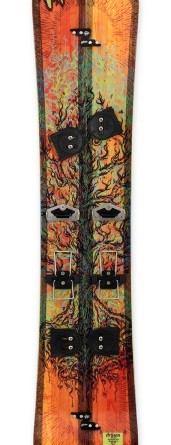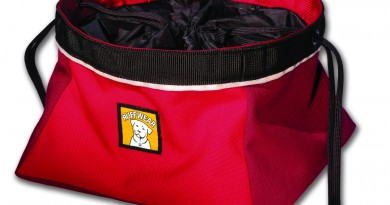Splitsville | New Backcountry Gear for 2012–13 Shares the Love Among Skiers and Riders
While backcountry skiing gear has been evolving by leaps and bounds in recent years, splitboards, or snowboards that separate into two long pieces (like skis) for the approach, have been quietly gaining traction as a popular tool for enjoying the Northeast’s backcountry. Since the release of Voile’s first DIY splitboard kit in 1994, splitboards have made accessing and enjoying backcountry snow increasingly fun and practical. And nearly 20 years later, refinements to splitboard bindings, skins, and hardware, as well as two-dozen splitboard designs on the market, are helping to grow splitboarding even further.
Recognizing this trend, this year’s backcountry gear review expands our focus from ski equipment to include splitboards.
Few shops in the region are more dedicated to splitboards than Power Play Sports in Morrisville, Vermont. Caleb Magoon assumed ownership of the shop just one year ago, excited to make outdoor sports and gear more accessible. Specializing in both new and used outdoor gear, including Voile and K2 splitboards, Power Play also offers the conversion of your old or existing snowboard. For $300, and using Voile’s splitboard hardware kit, Power Play will custom cut your board, install the conversion hardware, including a binding adapter for climbing, and set you on your way. Line up some climbing skins and poles too, and you’ll be exploring like never before.
“It’s a great way to get into splitboarding without dropping a ton of cash into a new splitboard setup,” says Magoon. “Nearly any wood-cored snowboard will do, and the splitboard binding adapters work well with just about any neglected bindings you have laying around.”
New Splitboard Gear for 2012–13
 Voile Artisan Splitboard
Voile Artisan Splitboard
156–168 cm., men’s; 146–156 cm., women’s
$850
Voile’s all-mountain, twin-tipped board received rave reviews from testers throughout the industry this past winter and spring, and given Voile’s long-standing reputation, it’s no surprise. Made in Salt Lake City, and featuring a solid sidewall construction, the artfully decorated Artisan is a more stable and hard-snow-friendly alternative to Voile’s new freestyle-oriented split, the Palindrome. Voile’s reliable splitboard hardware makes it easy to switch from climbing to downhill mode, and while the transition might take a minute or two longer than it does for skiers, most first-time splitboard users never look back. Find the Artisan here.
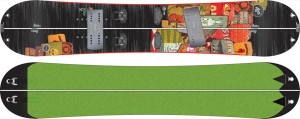 K2 Panoramic Splitboard
K2 Panoramic Splitboard
154–168 cm.
$600
The versatile Panoramic, now in its second season, is K2’s initial foray into the splitboard realm. Relying on a few successful elements of its popular backcountry ski line, K2 has put together a well-designed and user-friendly splitboard with a true all-mountain shape and flex. While the board can be purchased independently of any accessories, K2 also offers a kit that includes its own proprietary climbing skins and bindings ($900). The climbing skins feature a rugged tip and tail attachment system that helps to ensure that your skins will stay on no matter how many runs you try to squeeze into your day in the mountains. Find the Panoramic here.
Splitboard Skins
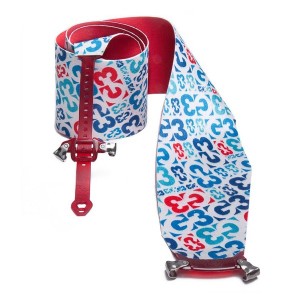 G3 Alpinist
G3 Alpinist
$170
Running with the success of their skiing skins, and responding to demands for a better splitboard skin, G3 entered the splitboard market last season. Featuring a clever tip and tail attachment system that utilizes swiveling stainless steel “hands,” these skins are designed to stay on your boards through even through the longest days. The Alpinist skins are made with a nontoxic, solvent-free glue that tends to stick to your bases as well as any other on the market, especially on colder days—and especially if you keep them clean and dry. Their proprietary, synthetic plush offers good traction and glides better than most skins on the market. Find Alpinist skins here.
Splitboard Bindings
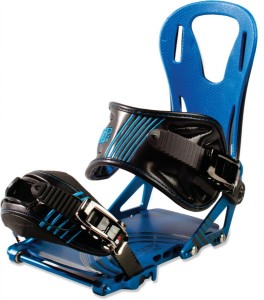 Spark R&D Burner
Spark R&D Burner
$330
Compatible with Voile’s splitboard hardware, Spark’s bindings have steadily earned a positive reputation among dedicated backcountry riders. The bindings are constructed with rigid and lightweight aluminum, and they are designed for hard-charging riders who enjoy longer days in the backcountry. Utilizing Burton straps, a relatively stiff highback, and with a forward lean adjustable to 25 degrees, the Burner is a very comfortable and responsive binding. All of Spark’s bindings synch up perfectly with Voile’s splitboard hardware. Find these bindings here.
Skis
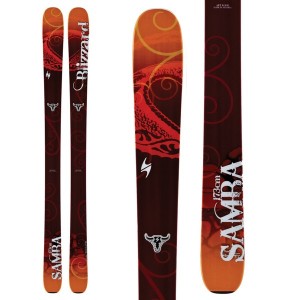 Blizzard Sambas
Blizzard Sambas
159–173cm; 131/98/116 mm
$700
Designed with aggressive female and lighter-weight male skiers in mind, the wood-cored, smooth-flexing Samba is a sturdy, semifat, all-mountain ski with a soft-snow bias. With plenty of side cut, a touch of camber, and a slightly rockered tip and tail, the Samba’s shape and flex are ideal for the varied terrain and snow conditions that characterize skiing in the Northeast. The skis are also beautifully decorated, with a deep red tone and heart motif at play. Like most downhill-oriented skis on the market these days, the Samba can be mounted with Alpine, all-terrain (AT), or telemark bindings. Find Sambas here.
Boots
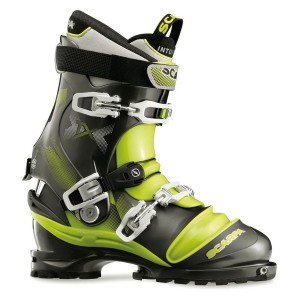 Scarpa Terminator X (AT/Telemark NTN)
Scarpa Terminator X (AT/Telemark NTN)
$670
Refined with Rottefella’s new NTN Freedom binding in mind, the updated, mid-weight, three-buckle Terminator X is Scarpa’s most versatile backcountry ski boot. Designed with the male user in mind, the boots offer excellent free-heel and telemark skiing performance when paired with either of Rottefella’s NTN bindings, while touring most efficiently with Rottefella’s new NTN Freedom. The tech-fittings on the Terminator X make it compatible with any tech AT bindings, and therefore allow the boot to be used for fixed-heel skiing too. This year’s Terminator X also features a more comfortable, heat-moldable liner, a stiffer cuff, and improved flex all around. Find Terminator X boots here.
All Terrain Bindings
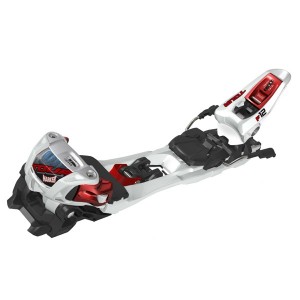 Marker Tour F12
Marker Tour F12
$430
The Tour is Marker’s take on an Alpine-style AT binding that offers a nice balance of downhill power and touring performance for that occasional foray off-piste or into the backcountry. The Tour is a couple of pounds lighter than Marker’s heavier-hitting Duke binding, and for all but the most aggressive skiers, it’s intended to serve nearly as well as the Duke when skiing in bounds. This year’s Tour features overhauled toe pivot hardware for increased durability and easier transitions between climbing and skiing. This binding requires skiers to remove their skis to change between skiing and touring mode, which can be cumbersome. Find Terminator X boots here.

